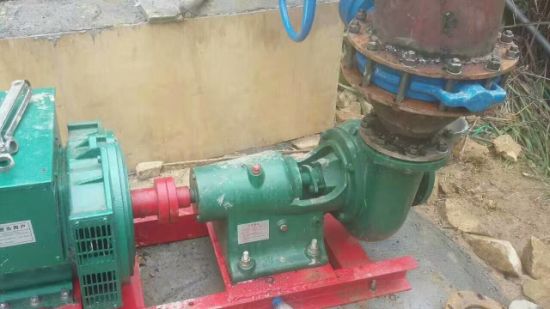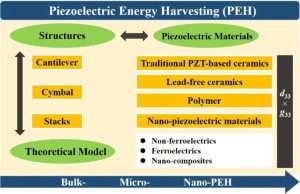How to make Small Hydro electric Power Turbine Generator

What is hydroelectric energy or power? Hydropower is defined as the use of a flowing water body or water in dams to generate electric current (electricity) in hydropower plants.
It is the conversion of the kinetic energy in water to mechanical energy when a turbine is used and the spinning turbine blades convert further the mechanical energy to electrical energy.
Advantages of Hydroelectric Power
There are pros and cons of hydroelectric power but the fact is that the advantages outnumbered the disadvantages. It’s renewable energy and it can generate a lot of electric power.
The hydraulic converts the kinetic and potential energy of the water jumps, the tides, and streams of water and through a process transforms it into electrical energy.
The higher the altitude of the waterfall, the more electricity one can generate.
There are hydro turbine generator suppliers on Alibaba that offer micro-hydroelectric generators and kits for sale at a cost of a few thousand dollars which can be used at home, in offices, schools.
The kits can be used for your project but if you want to make your water turbine to power a small hydroelectric generator for personal use, then read on…
Today, our tutorial is focused on the project materials and guidelines for building a homemade hydroelectric generator using a dam and hydroelectricity model.
You can take on this project for a science and technology exhibition or perhaps another means to get electric energy if we have a natural water stream that flows into a larger river or other body of water near your house.
You can try out this and generate electricity when you have the necessary kits, knowledge, and experience and follow the generator working principle.
The components of the electric generator
While generator has different parts such as the Engine, Control panel, lubrication system, fuel system, alternator, etc.
The water-energy powered generator has two main components, the inner part which does not move, and The rotor, the part that moves and has the magnets that induce electricity in the coils.
The Steps to Build A small Homemade Hydroelectric Turbine Generator
The first step to developing your hydroelectric powered generator is to get a disk and attach it to a piece of corrugated cardboard and ensure there are no lumps in the course of sticking it together.
The next thing is to take your cutter and cut both the shaft and the rotor, make a small hole at the center of the rotor with a pointed-end object that can Pierce into it easily without tearing and a larger hole is drilled at the center of the stator
You can now fold your cardboard by 3 x 16 cm in half and use insulating tape around it to maintain that shape and size.
You need a cylinder coiled with wire (Bobbin) separately and get prepared 8 strips of 4 cm of insulating tape before going further in the process.
Roll in enameled copper cable wire through it to form the first coil so that it has about 200 laps, not without leaving 10 cm and without winding it, this will serve as the connectors.
The next thing is to carefully remove the bobbin and use the pieces of the insulating tape to maintain the shape of the bobbin.
Now, take away the enamel from the ends of the cable with an abrasive material for smoothing and polishing like sandpaper which should be about 1 cm from each end.
Try to get rid of enamel from that portion of the cable and repeat the previous steps mentioned above to make another three bobbins.
Constructing the Coil
The next step is the coil construction where you put the coils on the disc, taking note of the direction indicated by the jig.
The two coils rolled clockwise and counter-clockwise and connect the cables appropriately in a way that the electric current flow accordingly on a path as suggested by the arrows, starting from the anti-clockwise coil, which is the lower left side.
To cover the cables with the coil appropriately, wind the non-enamel sides of each coil and wrap it with insulating tape to cover the connections and for safety but before doing that, you need to ensure everything is well connected so that you don’t uncover everything and start again.
You should measure the resistance of the circuit and your connections are done correctly, the resistance should be small ( usually less than 10 ohms).
Once you’re sure everything is okay with the connection, glue the coils to the cable using silicone and have four ceramic magnets or rare earth magnets ( more or less 18 mm in diameter is okay) is preferred to other different types of magnets.
Using a magnetic compass to determine the polarity of each side of the magnet and mark the pole of two magnets and the south of the other two.
Glue the magnets with silicone so that the polarity alternates (north-South-north-South); the position and the polarity should be described in the rotor template you want to use.
The shaft should be with a piece of cylindrical-shaped wood of about 20 cm x 1/4.
The Turbine Construction
To build a turbine that works well, you should drill the center of a cork of about 3 to 5 cm of 1/4 “.
Place the cork on the template and use your pen to mark the places where you place the plastic spoons and use a blade to pierce the marked points.
Cut the handle of 8 plastic or wooden spoons, insert the spoons in the cork and adjust the angle and depth of each wooden spoon that these are scattered and have the same angle of inclination to the cork.
Get a 4-liter rectangular-shaped bottle or glass pot, cut short with cutting material. Use a calibrated ruler to find the center and mark this point with a permanent marker.
Turn to the other side and do the same. Now, punch both sides with a 1/4 “drill on the point you’ve just marked.
Make sure the stator is to one side of the container in such a way that the center of the stator coincides with the center of the container.
Now, cut two pieces of 1 cm each of a PCV tube of 1/4; you can use a knitting machine to do this and let it pass through the center of the plastic container and the stator and the shaft as well.
After that, you can now position the turbine inside the container so that the spoons are under the bottleneck and adjust the position of the vinyl tube so that they do not touch the inside of the container.
Now, place the second tube after the stator to help to keep all the parts in position when it turns. Turn the turbine to check if the turbine is not touching the side of the container.
Once you’ve done that, Insert your turbine rotor into the shaft while the magnets must be 2 or 3 millimeters from the coils. Rotate the shaft to make sure that the magnets do not hit the coils.
If they’re too close, you can adjust the angle of the disc if the need be. If the turbine rotor rotates smoothly, it sets its position by placing hot silicone over the anchor.
Place the container near a pipe and rotate your turbine with water. Measure the energy you produce with a meter, determine the energy by calculating the head of the flowing water against the flow ( water volume).
The gravity of the water-fall from the source is also important and the hydroelectric power is measured in watts or kilowatt. If you decided to use the Dynamo, replace it with the rotor and stator.





